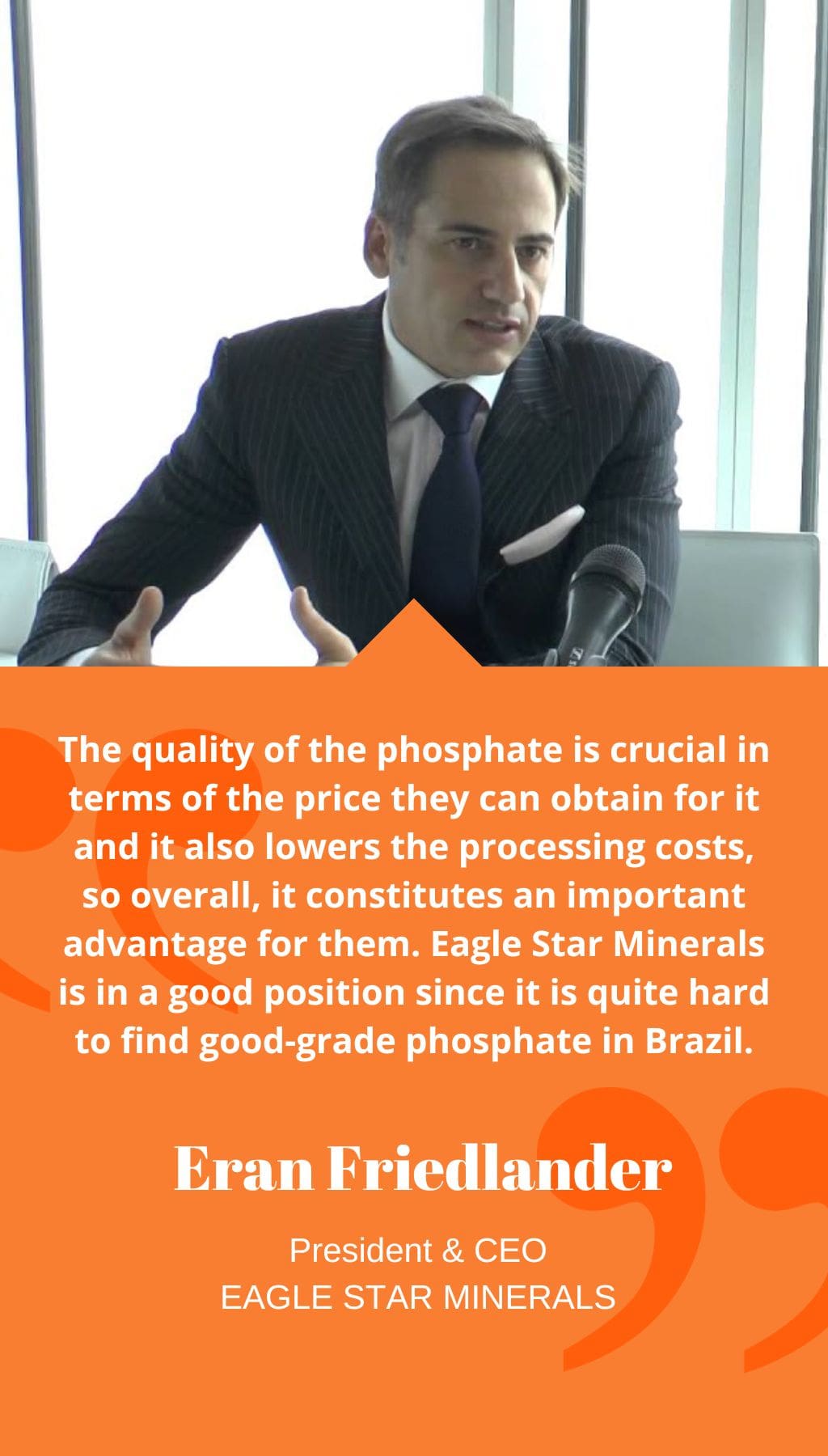
- Brazil | 27 May 2016

Please provide a brief overview of Eagle Star Minerals’ history and main milestones.
Eagle Star Minerals has been operating in Brazil for almost three years, originally focused on iron ore. However, after exploring opportunities, they realized that the most attractive market was actually fertilizers due to the big gap between supply and demand in Brazil. The company quickly moved to seize appropriate opportunities and has been successful over the past three years. They have made significant progress and raised share prices, with assets situated in the Cerrado region, and they are looking to go into production as early as next year.
What can you tell us about the infrastructure in the region and what is Eagle Star Minerals’ budget for the year 2016?
Eagle Star Minerals benefits from the infrastructure investments that have already been made in the region to accommodate MBAC’s business. The local government has been building roads, an airport, power lines, and water dams that are continuously being improved. For the year 2013, most of their budget will go into continuing drilling at their Bomfim Hill project. They currently have one rig, but they will probably add one or two more by the end of the year as new targets are discovered and developed. Eagle Star Minerals is also looking into building up its facility for the direct application natural fertilizer. They do not know whether they will be acquiring an existing facility or building their own. In addition to their Bomfim Hill project, they are conducting live environment tests for their direct application fertilizer product at their Ruth project in Piaui. Their budget for the year should amount to almost $5 million.
What is the state of development for Eagle Star Minerals’ three projects in Brazil: Bomfim, Ruth, and Samba? What is the main focus for the year?
Eagle Star Minerals’ main focus for the year is Bomfim, with which they will be going into production (open-pit) in a short period of time given the low costs associated with it and the already existing demand for natural fertilizer in the region. There is enough high-grade material there to last for at least five years of production, and they are also currently in the process of releasing a preliminary NI 43-101 resource estimate report for a small portion of their Bomfim Hill target, expected to come out in June. Ruth, situated in Piaui, is another project that holds great potential, and they are conducting live environment tests for one of the products that they intend to sell. If successful, they will consider going into production in the near future. Samba has had some promising preliminary results, but due to the strike at DNPM last year, they are still in the initial stages of the exploration process.
What are the grades of phosphate that Eagle Star Minerals are intersecting?
Bomfim Hill has grades that range from 2% (in large volumes) to 28%, which constitutes a very high grade, especially for Brazil, where anything above 10% is considered to be a good grade. The quality of the phosphate is crucial in terms of the price they can obtain for it and it also lowers the processing costs, so overall, it constitutes an important advantage for them. Eagle Star Minerals is in a good position since it is quite hard to find good-grade phosphate in Brazil.
How did Eagle Star Minerals significantly increase its market capitalization to $22 million in 2015, a notable performance in the current rough market conditions for juniors?
Eagle Star Minerals is focused on a good commodity, and many believe phosphate will become increasingly popular in the future due to the world’s growing population and its need for food. Furthermore, Brazil itself is the largest agrarian country in the world, and the huge demand for their commodity has drawn a lot of attention to them.














